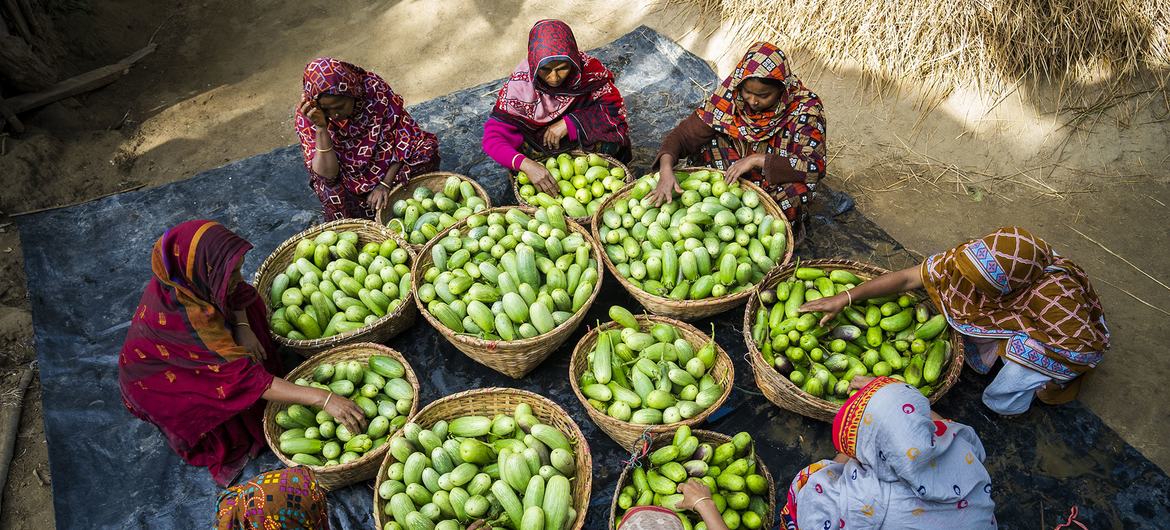Ending World Hunger Costs Less than 1% of Global Military Spending
UNITED NATIONS, 24 Nov 2025
UN News | Human Wrongs Watch - TRANSCEND Media Service
— Ending hunger by 2030 would cost just $93 billion a year — less than one per cent of the $21.9 trillion spent on military budgets over the past decade, according to the UN World Food Programme (WFP).

International support for the world’s hungriest people is “slow, fragmented, and underfunded,” meaning that many living in the world’s trouble spots will likely be unable to receive sufficient help next year, underscored, WFP.

“The poorest pay the ultimate price,” said Amina Mohammed, UN Deputy Secretary-General.
“When the elephants fight, it is the grass that suffers,” she added, quoting an African proverb that is often used to convey the idea that when powerful nations, organizations, or individuals, engage in conflict, it is the weak or innocent who bear the brunt of the suffering.
Around the world, that “grass” — the innocent civilians of Sudan, Gaza, Haiti, Yemen, the Sahel, the Democratic Republic of Congo, and so many other places — are suffering beyond measure.
Families are paying the price for wars they did not start, and for decisions made in rooms where their voices are never heard, the UN deputy chief said.
WFP, a Critical Lifeline
“WFP provides a critical lifeline to people on the frontlines of conflicts and weather disasters, as well as those forced to leave their homes, and we are transforming how we work to invest in long-term solutions to address food insecurity,” said WFP Executive Director Cindy McCain.
In 2026, the agency plans to assist 110 million vulnerable people at an estimated cost of $13 billion, providing emergency food, nutrition support, community resilience programmes, and technical assistance to strengthen national systems.
“The world is grappling with simultaneous famines in Gaza and parts of Sudan. This is completely unacceptable in the twenty-first century,” stressed Ms. McCain.
“Across the globe, hunger is becoming more entrenched. WFP has proven time and again that early, effective, and innovative solutions can save lives and change lives – but we desperately need more support to continue this vital work”.
Investing in climate adaptation, promoting peace, and supporting local markets, while ensuring women and young people have ownership and decision-making power, are among the key priorities crucial to ending world hunger, said Amina Mohammed.
Tags: Famine, Global Campaign on Military Spending, Hunger, Military Capitalism, UNFP-UN Food Program, US Military, United Nations, World Food Programme
DISCLAIMER: The statements, views and opinions expressed in pieces republished here are solely those of the authors and do not necessarily represent those of TMS. In accordance with title 17 U.S.C. section 107, this material is distributed without profit to those who have expressed a prior interest in receiving the included information for research and educational purposes. TMS has no affiliation whatsoever with the originator of this article nor is TMS endorsed or sponsored by the originator. “GO TO ORIGINAL” links are provided as a convenience to our readers and allow for verification of authenticity. However, as originating pages are often updated by their originating host sites, the versions posted may not match the versions our readers view when clicking the “GO TO ORIGINAL” links. This site contains copyrighted material the use of which has not always been specifically authorized by the copyright owner. We are making such material available in our efforts to advance understanding of environmental, political, human rights, economic, democracy, scientific, and social justice issues, etc. We believe this constitutes a ‘fair use’ of any such copyrighted material as provided for in section 107 of the US Copyright Law. In accordance with Title 17 U.S.C. Section 107, the material on this site is distributed without profit to those who have expressed a prior interest in receiving the included information for research and educational purposes. For more information go to: http://www.law.cornell.edu/uscode/17/107.shtml. If you wish to use copyrighted material from this site for purposes of your own that go beyond ‘fair use’, you must obtain permission from the copyright owner.
Join the discussion!
We welcome debate and dissent, but personal — ad hominem — attacks (on authors, other users or any individual), abuse and defamatory language will not be tolerated. Nor will we tolerate attempts to deliberately disrupt discussions. We aim to maintain an inviting space to focus on intelligent interactions and debates.